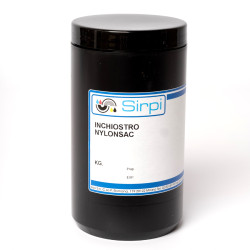Discover Everything You Need to Know About Textile Screen Printing Inks
Textile screen printing is one of the most popular printing techniques in the world of customization of garments and other products. Thanks to the variety of screen printing inks available, we can achieve unique effects on different types of surfaces. From water-based and plastisol inks to acramines and lacquers, each option has specific characteristics that make it ideal for certain types of jobs.
If you are looking for the best textile screen printing ink for your business, this guide will explain the types of screen printing inks, their uses, and how to choose the one that best suits your needs.
Table of Contents
- What is Textile Screen Printing and Why is it So Popular?
- Types of Screen Printing Inks and Their Differences
- How to Choose the Right Ink for Your Project?
- Plastisol Inks: Advantages and Characteristics
- Water-Based Inks: An Eco-Friendly Option
- Acramines and Lacquers: When to Use Them?
- How to Improve Wash Resistance in Screen Printing?
- The Drying Process in Textile Screen Printing
- Working with Inks: Tips and Recommendations
- Where to Buy the Best Screen Printing Inks?
What is Textile Screen Printing and Why is it So Popular?
Textile screen printing is a printing technique that allows you to customize garments and different surfaces with great precision and high definition. Its versatility allows working with a variety of colors and applying inks on materials such as cotton and blends, polyester, paper, and cardboard.
Some of the main features to highlight of textile screen printing are:
✅ Durability of the print.
✅ Vibrant colors and great opacity.
✅ Ability to print on light and dark backgrounds.
✅ Different effects can be achieved with water-based, plastisol, acramine, and lacquer inks.
If you are a fan of customization and are looking for a durable and eco-friendly printing method, screen printing can become the best option for your business.
Types of Screen Printing Inks and Their Differences
When choosing the best textile screen printing ink, we need to know the different types and their uses:
- Plastisol inks: These are the most used in the textile industry due to their coverage and durability.
- Water-based inks: These are more eco-friendly and leave a soft finish.
- Acramines: Ideal for light fabrics and quick drying.
- Lacquers: Offer glossy finishes and great opacity on different materials.
- Transparent inks: Allow gradient effects and color blending.
Each type of ink can use specific additives to improve its adhesion or flexibility on the garment.
How to Choose the Right Ink for Your Project?
To choose the one that best suits your projects, you should consider:
✅ Type of garment: If you work with light or dark garments, you will need different inks.
✅ Desired effect: For a matte, glossy, or textured finish.
✅ Wash resistance: Some inks have better adhesion after proper drying and curing.
✅ Eco-friendly: There are options free of phthalates and other typically harsh chemicals.
If you are new to screen printing, we recommend starting with a plastisol ink to achieve good results easily.
Plastisol Inks: Advantages and Characteristics
Plastisol ink is the most used option in textile screen printing due to its high durability.
Advantages of plastisol ink:
✅ Vibrant colors and high coverage on any garment.
✅ It does not dry on the screen, allowing for long working periods.
✅ Ideal for dark garments due to its opacity.
To cure plastisol ink correctly, you will need to apply heat at 160-170°C, either with a drying oven or a flash cure.
Water-Based Inks: An Eco-Friendly Option
If you are looking for a more sustainable and eco-friendly option, water-based inks are ideal.
Benefits:
✅ Soft and elastic finish on the garment.
✅ No strong odors or toxic solvents.
✅ Perfect for light garments and cotton.
The main difference with plastisol ink is that this requires more drying time and may need a retarder to prevent it from drying on the screen.
Acramines and Lacquers: When to Use Them?
Acramines are water-based inks specially designed for light garments, while lacquers are used for prints with a glossy finish and high opacity.
- Acramines: Ideal for work on cotton.
- Lacquers: Recommended for printing on paper and cardboard or synthetic textiles.
If you want to apply Pantone colors, some brands offer ready-to-use mixes for textile screen printing.
How to Improve Wash Resistance in Screen Printing?
To make your prints last longer, follow these tips:
✅ Use the right emulsion for the type of ink.
✅ Perform proper curing with heat.
✅ Use plasticizer additives to improve the ink's flexibility.
The Drying Process in Textile Screen Printing
Drying on the screen is key to preventing the ink from drying unevenly and losing adhesion.
- Plastisol: Cured at 160°C with an oven or flash cure.
- Water-based: Air-dried or with gentle heat.
- Lacquers and acramines: Quick drying at room temperature.
Some inks require additive mixtures to improve the drying and adhesion process.
Working with Inks: Tips and Recommendations
If you work with inks daily, follow these recommendations:
✅ Do not leave ink on the screen for too long.
✅ Use the right mesh for each type of ink.
✅ Keep an open container days, weeks, and months tightly closed to prevent it from drying out.
Where to Buy the Best Screen Printing Inks?
At Keygadgets Store, we offer:
✅ Plastisol, water-based, acramine, and lacquer inks of high quality.
✅ Accessories and emulsions for professional screen printing.
✅ Competitive prices and fast shipping.










